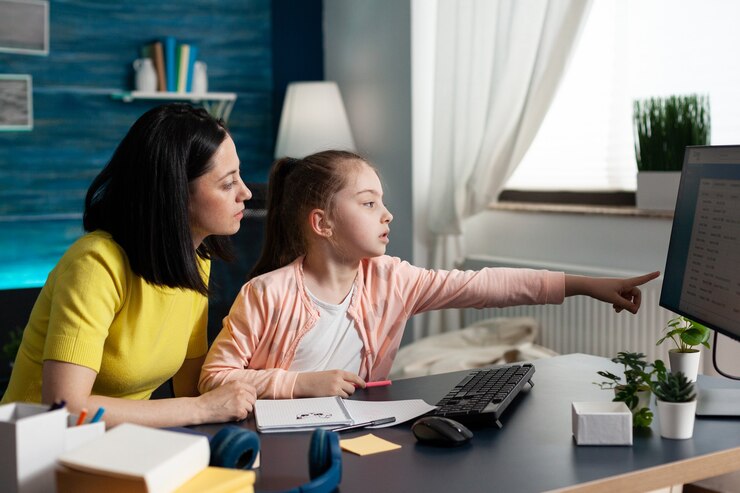Unlocking the Secrets of Effective Communication with Children: A Parent’s Guide
 The Importance of Effective Communication with Children
The Importance of Effective Communication with Children
Discover proven strategies for effective communication with children in this essential parent’s guide, unlocking the secrets to fostering connection.
Effective communication with children is crucial in today’s digital age. It lays the foundation for a strong parent-child bond and facilitates the development of essential life skills in children. By communicating effectively, parents can nurture their child’s emotional intelligence, problem-solving abilities, and social skills. Furthermore, open communication fosters mutual trust and respect between parents and children, creating a supportive environment for growth and development.
Understanding Your Child’s Developmental Stage
To communicate effectively with children, it’s essential to understand their developmental stage. Children of different ages have varying levels of cognitive, emotional, and social development, which influence how they perceive and respond to communication. By recognizing your child’s developmental milestones, you can tailor your communication approach to meet their specific needs and capabilities, fostering a deeper understanding and connection between you and your child (effective communication with children).
Active Listening Techniques for Effective Communication
Active listening is a cornerstone of effective communication with children. It involves not only hearing what your child is saying but also paying attention to their emotions, body language, and underlying needs. By practicing active listening, parents can demonstrate empathy and validation, making their child feel heard and understood. Techniques such as paraphrasing, reflecting feelings, and asking open-ended questions can enhance communication and strengthen the parent-child relationship.
Non-verbal Communication with Children
Non-verbal communication, including gestures, facial expressions, and body language, plays a significant role in interactions with children. Often, children rely more on non-verbal cues than verbal communication to understand and express themselves. Parents can use non-verbal cues to convey warmth, reassurance, and support, enhancing the effectiveness of their communication with children. By being mindful of their own non-verbal signals and tuning into their child’s cues, parents can promote clearer and more meaningful communication (effective communication with children).
Setting Clear Expectations and Boundaries
Clear expectations and boundaries are essential for fostering effective communication with children. By establishing consistent rules and guidelines, parents provide structure and predictability, which are vital for a child’s sense of security and well-being. Clear expectations help children understand what is expected of them and provide a framework for positive behavior. When communicating expectations and boundaries, it’s essential to be firm yet empathetic, maintaining open lines of communication and addressing any concerns or questions that arise.
 The Power of Positive Reinforcement in Communication
The Power of Positive Reinforcement in Communication
Positive reinforcement is a powerful tool for promoting desirable behaviors and strengthening the parent-child bond. By acknowledging and praising their child’s efforts and achievements, parents can boost their self-esteem and motivation. Positive reinforcement creates a positive feedback loop, encouraging children to continue engaging in desired behaviors. However, it’s essential to provide specific and genuine praise, focusing on effort rather than outcomes, to reinforce positive behavior effectively.
Dealing with Difficult Conversations and Conflicts
Difficult conversations and conflicts are inevitable in parent-child relationships. However, approaching these situations with empathy, patience, and effective communication skills can help resolve conflicts constructively and strengthen the parent-child bond. When addressing difficult topics, it’s essential to create a safe and supportive environment where children feel comfortable expressing their thoughts and feelings. Active listening, empathy, and problem-solving techniques can help navigate challenging conversations and find mutually satisfactory solutions (effective communication with children).
Building Trust and Open Lines of Communication with Your Child
Building trust is fundamental to effective communication with children. Trust forms the basis of a secure attachment between parent and child, allowing for open and honest communication. To build trust, parents must be consistent, reliable, and responsive to their child’s needs. By fostering a supportive and nurturing environment, parents encourage their child to share their thoughts, feelings, and concerns openly. Open lines of communication facilitate mutual understanding and strengthen the parent-child relationship, fostering a sense of closeness and connection.
 Technology and Communication: Finding a Balance
Technology and Communication: Finding a Balance
In today’s digital age, technology plays a significant role in communication with children. While technology offers various benefits, such as access to information and connectivity, it also presents challenges, such as screen time management and digital distractions. Parents must find a balance between technology use and face-to-face communication to foster healthy parent-child relationships. Setting limits on screen time, engaging in tech-free activities, and modeling healthy technology habits can help promote meaningful communication and connection in the digital age.
Conclusion: Fostering Healthy Communication with Your Child
Effective communication with children is essential for nurturing a strong and supportive relationship between parents and children. By understanding the importance of effective communication, recognizing their child’s developmental stage, and implementing active listening techniques, parents can create a safe and supportive environment for open communication. Setting clear expectations and boundaries, using positive reinforcement, and navigating difficult conversations with empathy and respect further enhance communication and strengthen the parent-child bond. By fostering trust, promoting open lines of communication, and finding a balance between technology and face-to-face interaction, parents can cultivate healthy communication habits that lay the groundwork for their child’s emotional and social development.
Unlocking the Secrets of Effective Communication with Children: A Parent’s Guide
Learn more about Effective Communication with Children on our YouTube channel.
#effectivecommunicationwithchildren #positivebehavioreffectivelyinchildren #childpsychology




